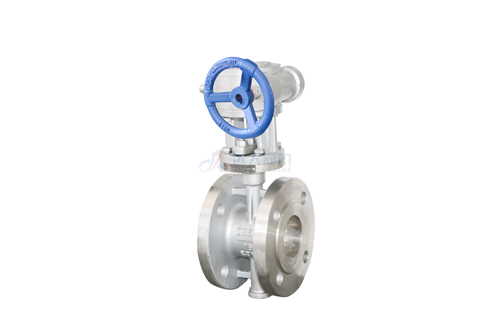A butterfly valve is a shut-off valve that regulates the flow of materials through pipes by rotating a disc a quarter turn to open or close the valve. A butterfly valve is a quarter-turn valve that starts throttling as well as circulation control of fluids. Given its name, you can quickly picture a slim steel disc that "flutters" about a dealt axis (stem assembly). The opening and closing device permits and limits the flow of a medium between an upstream and also downstream pipeline.
In a much more technological tone, a butterfly valve is a regulated rotating valve that includes a turning disk that directs the flow of fluid in a system. Basically, the disk is operable as much as 90 degrees and that's why it is called a quarter-turn valve. A butterfly valve regulates the flow linearly and also can be bi-directional. The setup, as well as the procedure of the valve, is similar to a ball valve, but it is lighter and less expensive.
For strangling services, you can make use of a high-performance butterfly valve, which is a greater sector criterion for bigger applications. Normally, this kind of valve is made to process huge capacities and often, viscous and seawater tools. We will certainly obtain much more right into high-performance butterfly valves later.
You can locate butterfly valves usually in piping systems supplying big volumes of liquids. These valves are fragile and also not recommended to take care of completely dry mass solids as they can choke or break the butterfly valve.
The procedure can be through packing from a pneumatic actuator, an electric motor, a solenoid, or a hydraulic piston and cylinder. Either way, this type of valve is the most economical and the easiest to handle. Butterfly Valves are also more affordable than other types of valves.
Here are some of the advantages of butterfly valves compared with other valve types.
1. Lightweight and compact
2. Easy to install
3. Low-pressure loss
4. Low maintenance
5. Simple, rapid operation
The disc can interrupt flow even when it is open
Not recommended for high differential pressures
Butterfly valves are used in many industrial applications such as:
ㆍHVAC
ㆍVacuum service
ㆍHigh-temperature applications
ㆍRefrigeration and Air Conditioning systems
ㆍIrrigation and agricultural needs
ㆍCorrosive processing
ㆍLubrication
ㆍPetroleum Industries
ㆍWastewater treatment
ㆍSlurries
ㆍSanitary valve applications
ㆍSprinkler and fire protection systems
When it comes to choosing a butterfly valve type for a specific application, one can look into a pile of different valve classifications. Seat, body, and disc materials are varied depending on the service they will be used.
In butterfly valves, fluid flow constriction and control are easily done by just turning the valve handle. As it is a regulating valve, it controls the flow rate of the system with the help of actuators. Basically, when a flow monitor senses that a set parameter (differential pressure) has been reached, it will signal the valve actuator to close or open the valve.

To control a regulating valve remotely, it must have a flow controller that automatically communicates with the valve mechanism based on the flow rate.
Butterfly valves are used typically in low-pressure and low-temperature applications. They are lightweight and easy to manipulate and their quarter-turn action can also be used for flow isolation.
In food industries where there are aggressive washdown processes, butterfly valves can be used for backflow prevention. This is necessary, from standard regulations, as it is aimed in food processing to deliver procedures in sanitary conditions.
Here are a few installation tips, as well as a checklist to take note of:
1. In order to check parts of the butterfly valve, you can be able to disassemble it in order to further inspect its parts.
2. Before anything, see to it that the flange and pipeline are clean from foreign materials. These can damage the seat or disc and can also cause the disc to move restrictions.
3. Since resilient seated valves extend to both faces, gaskets are not needed.
4. In order to easily insert the valve body spread the flanges and align the pipe-work. With this, the valve body is inserted even with no contact with pipe flanges.
5. Partially open the valve disc to prevent the valve from jamming.
6. Insert the valve between the flanges, taking care not to damage the seat faces.
7. When you lift the valve, hold it by the locating holes. Also, you can tie up a nylon sling around the body or the neck. Make sure you do not lift the valve at the actuator or its operator.
8. Once the valve is placed and aligned in between the flanges, insert all the bolts before hand-tightening them.
9. Slowly open the disc. This will test if it has the right clearance from the inside of the pipes.
10. After which, a gradual closure of the valve should also be done to verify enough clearance from the disc to the pipe flanges.
11. Fully open the valve and start to tighten all of the bolts.
12. To test proper clearances after fastening the valve in the pipeline, repeatedly fully open and close the valve. This ensures the valve functions well during operation.